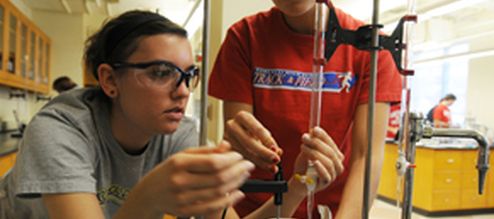Title
Reactions of HCI(g), DCI(g), and HBr(g) with the Adduct Pyrazine-Phosphorus(V) Chloride
Document Type
Article
Publication Date
1986
Publication Source
Inorganic Chemistry
Abstract
In previous communications we have reported the synthesis, molecular structure, and solution properties of the acid-base adduct formed from pyrazine (pz), C4H4N2, and phosphorus (V) chloride, PCl5. In the solid state the molecule, pz*PCl5, belongs to point group C2v with octahedral geometry around phosphorus. The plane of the pyrazine ring bisects the Cl-P-Cl 90° angle, and the P-N bond is unusually long, 2.021 A. In solution of nitromethane, the adduct is in equilibrium with PCl5 and pz.
This rapid exchange is responsible for a singlet in the 1H NMR spectrum, even at -100 degrees C.
Because a second nitrogen base site on the adduct is available for further reaction, we have investigated the possibility of coordinating a second mole of acid to the adduct.
Inclusive pages
4606–4608
ISBN/ISSN
0020-1669
Copyright
Copyright © 1986, American Chemical Society
Publisher
American Chemical Society
Volume
25
Peer Reviewed
yes
Issue
25
eCommons Citation
Knachel, Howard; Owens, Sherry D.; Lawrence, Steven H.; Dolan, Mary E.; Kerby, Michael C.; and Salupo, Teresa A., "Reactions of HCI(g), DCI(g), and HBr(g) with the Adduct Pyrazine-Phosphorus(V) Chloride" (1986). Chemistry Faculty Publications. 51.
https://ecommons.udayton.edu/chm_fac_pub/51
COinS



